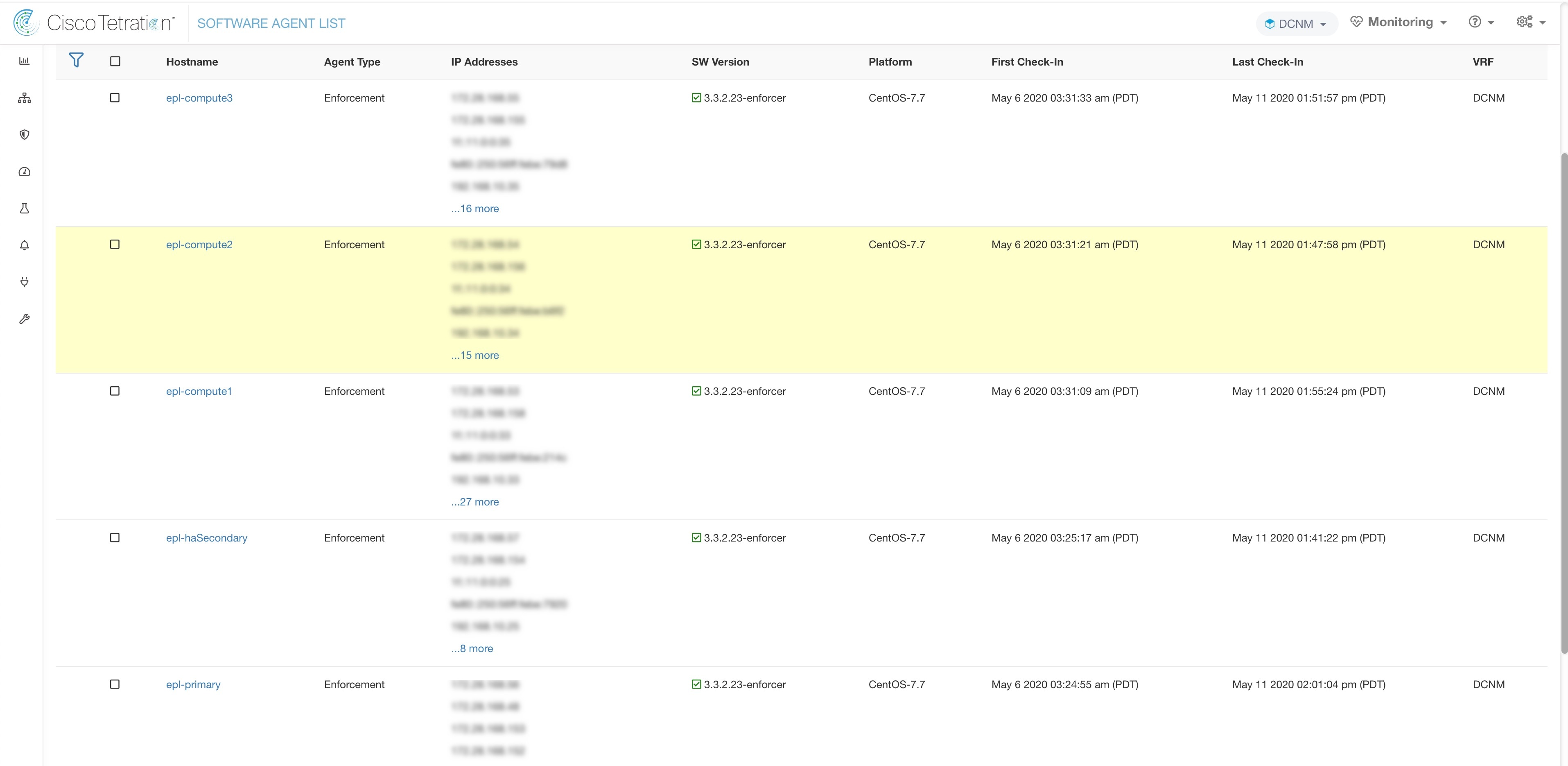Tetration Agent With DCNM Validation
Using the installer script is the recommended method for deploying deep visibility enforcement agents on Linux platforms.
Before you begin
If the installed agent is to be connected to a Tetration cluster, the ACTIVATION_KEY and HTTPS_PROXY parameters will be required. If the installer script is used, it will automatically populate the ACTIVATION_KEY, while you need to insert the HTTPS_PROXY information directly into the script.
If manual deployment is used, manually insert both ACTIVATION_KEY and HTTPS_PROXY parameters yourself. For more information, see User Configuration for Tetration SaaS.Procedure
|
Step 1 |
Log into the Cisco TetrationOS Software Web UI with your credentials. |
||||||||||||||||||||||||||
|
Step 2 |
Choose Agent Config from the Settings menu to display the Agent Config window. |
||||||||||||||||||||||||||
|
Step 3 |
Navigate to the Software Agent Download tab. |
||||||||||||||||||||||||||
|
Step 4 |
Choose Linux in the Select Platform section. |
||||||||||||||||||||||||||
|
Step 5 |
Choose Deep Visibility or Enforcement in the Select Agent Type section. |
||||||||||||||||||||||||||
|
Step 6 |
Click the Download Installer button and save the file to a local disk. |
||||||||||||||||||||||||||
|
Step 7 |
Log into your DCNM with the root privileges. Copy the installer shell script and execute the script.
The installer script command syntax is as follows:
|
||||||||||||||||||||||||||
|
Step 8 |
Run the following command to verify if the agent is installed. An entry appears as follows:
tet-sensor-3.1.1.50-1.el6.x86_64

|
 Feedback
Feedback